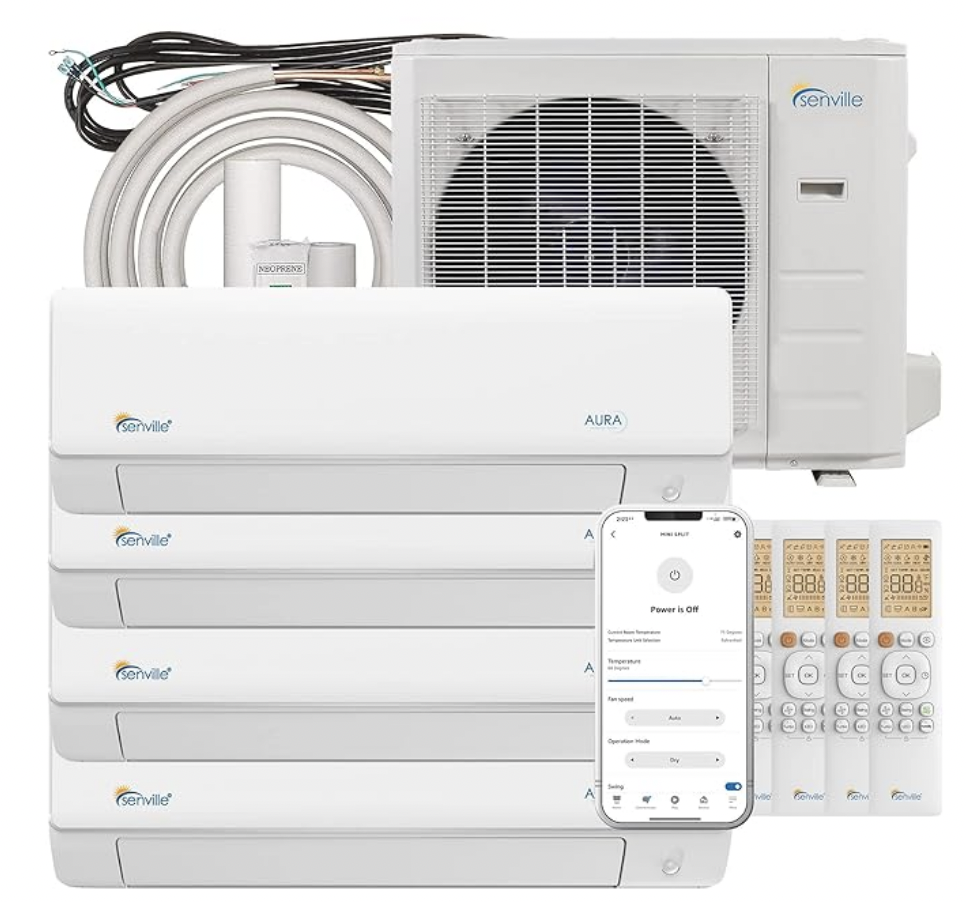Troubleshooting a Senville fan motor can be a complex task, but with the right approach and tools, you can effectively diagnose and resolve any issues. This comprehensive guide will walk you through the step-by-step process of testing a Senville fan motor, providing you with the technical expertise and practical knowledge needed to tackle this challenge head-on.
Checking the Voltage
The first step in testing a Senville fan motor is to check the voltage. This is a crucial step as it can help you identify whether the issue lies with the power supply or the motor itself.
To check the voltage, you will need a multimeter. Set your multimeter to the appropriate voltage setting, and then follow these steps:
- Locate the motor connector on the Senville unit.
- Carefully insert the positive (red) lead of your multimeter into the positive terminal of the motor connector, and the negative (black) lead into the negative terminal.
- Observe the voltage reading on your multimeter. The voltage should be within the specifications provided in the Senville service manual.
- If there is no voltage present, the issue may be with the power supply or the wiring. Check the circuit breakers, fuses, and any other electrical components to ensure they are functioning correctly.
Testing the Fan Motor

If the voltage is present, the next step is to test the fan motor itself. This involves measuring the resistance of the windings to ensure they are within the specified range.
- Locate the fan motor and identify the winding terminals.
- Set your multimeter to the appropriate resistance setting.
- Carefully touch the positive (red) lead of your multimeter to one winding terminal and the negative (black) lead to the other terminal.
- Observe the resistance reading on your multimeter. The resistance should be within the specifications provided in the Senville service manual.
- Repeat this process for each winding of the motor to ensure they are all within the acceptable range.
If the resistance readings are not within the specified range, the fan motor may need to be replaced.
Checking the Control Board
If the fan motor is functioning properly, the issue may lie with the control board. You can test the control board by measuring the voltage at the motor connector.
- Locate the motor connector on the control board.
- Set your multimeter to the appropriate voltage setting.
- Carefully insert the positive (red) lead of your multimeter into the positive terminal of the motor connector, and the negative (black) lead into the negative terminal.
- Observe the voltage reading on your multimeter. The voltage should be within the specifications provided in the Senville service manual.
- If the voltage is not within the specified range, the control board may need to be replaced.
Testing the Temperature Sensor
If the fan is not running at all, the issue may be with the temperature sensor. You can test the temperature sensor by measuring the voltage at the sensor connector.
- Locate the temperature sensor connector on the Senville unit.
- Set your multimeter to the appropriate voltage setting.
- Carefully insert the positive (red) lead of your multimeter into the positive terminal of the sensor connector, and the negative (black) lead into the negative terminal.
- Observe the voltage reading on your multimeter. The voltage should be within the specifications provided in the Senville service manual.
- If the voltage is not within the specified range, the temperature sensor may need to be replaced.
Troubleshooting Tips
- Always refer to the Senville service manual for the specific voltage and resistance specifications for your model.
- Ensure that you are using a high-quality multimeter and that it is properly calibrated.
- Take safety precautions when working with electrical components, such as turning off the power and wearing appropriate personal protective equipment (PPE).
- If you are not comfortable performing these tests yourself, it is recommended to seek the assistance of a professional HVAC technician.
Conclusion
Testing a Senville fan motor requires a methodical approach and a good understanding of electrical systems. By following the steps outlined in this guide, you can effectively diagnose and resolve any issues with your Senville fan motor. Remember to always prioritize safety and refer to the manufacturer’s instructions for the most accurate and up-to-date information.
